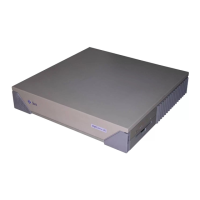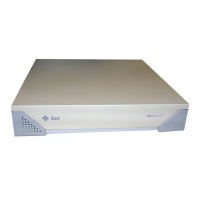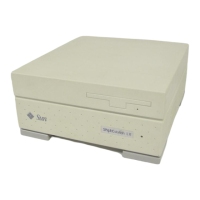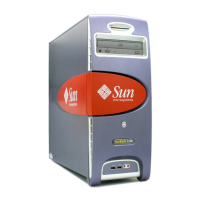Troubleshooting Overview 2-9
2
test cdrom Performs a self-test diagnostic on the
CD-ROM drive.
The CD-ROM must be set to
SCSI target 6 and have a CD
inserted in the drive or the test
will fail.
See description.
test tape
test tape0
test tape1
Tests the SCSI tape drive by
executing the drive self-test
program. tape and tape 0 are the
first tape drive. tape 1 is the second
tape drive.
Connect the tape drive to the
system and then turn on the
power.
See description.
test ttya
test ttyb
Outputs an alphanumeric test
pattern on the system serial ports
(ttya = serial port A, ttyb = serial
port B).
Attach a terminal to the serial
port to observe the output.
Tests serial ports.
test keyboard Executes the keyboard self- test. The
four LEDs on the keyboard should
flash on once, and the message
Keyboard Present is displayed.
Keyboard must be connected. See description.
test-memory Tests all of the system main memory
if the diag-switch? is true. If
diag-switch? is set to false, it
tests the memory according to the
number specified in
selftest-#megs.
None. See description.
test-all Tests all devices in the system (such
as SBus cards) that have a built-in
test program. Hard disks, tapes, and
CD-ROMs are not tested.
Set the diag-switch? NVRAM
parameter to true.
When a device driven
by an SBus card is not
functioning properly.
watch-clock Displays seconds from the system’s
Time-of-Day chip.
None. See description.
watch-net Monitors broadcast Ethernet packets
on the Ethernet cable(s) connected to
the system.
Connect the system to the
network via the desired
Ethernet port.
See description.
watch-aui Monitors broadcast Ethernet packets
(10BASE5—Thicknet) on the
Ethernet cable(s) connected to the
system.
Connect the system to the
network via the desired
Ethernet port.
See description.
Table 2-4 Selected FORTH Diagnostic Tests (Continued)
Type of Test Description Preparation When to Use

